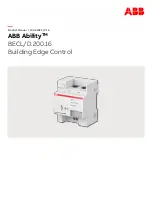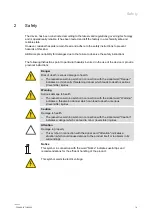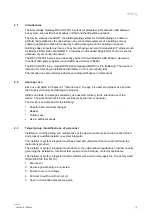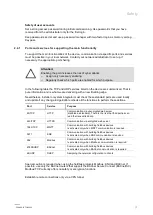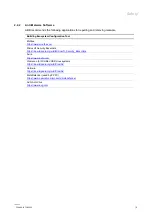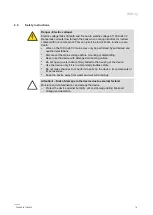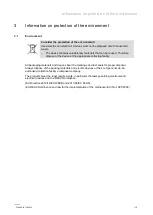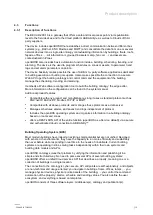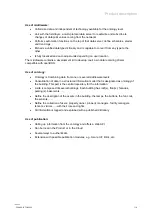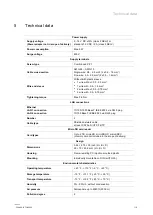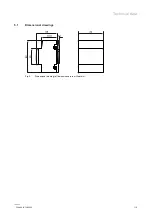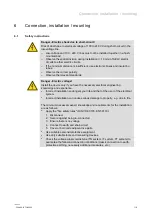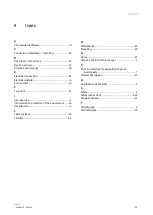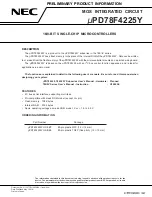
Product description
2CKA001473B5394
│13
4.3
Functions
4.3.1
Description of functions
The BECL/D.200.16 is a gateway that offers a safe and local access point via its publication
level to the field devices and to the Cloud platform ABB Ability
TM
as well as to Clouds of third-
party suppliers.
The device includes openBOS® that establishes a direct communication between different bus
systems (e.g., BACnet, KNX, Modbus and MQTT) and consolidate the data from one or several
network devices into a single site ontology contextualizing information by buildings, floors, roofs,
façade, offices, …. All information is grouped in assets (Lamp, fan coil, …) and assets are
contextualized in Zones
openBOS® also includes basic automation function inside a building: scheduling, trending, and
alarming. The device is the used to program schedules on zones or assets, to parameter trend
logs and set alarm parameters on points.
The device basically makes possible the use of ABB or 3
rd
party software applications dedicated
to building execution or building occupants. It also makes possible the connection to a secure
Web API to get the building ontology and control command the equipment of the building,
manage the scheduling, trending, and alarming.
It embeds a Web software configuration tool to build the building ontology: the edge editor.
More information on the configuration can be found in the system manual.
Additional product features:
■
Compatible with any product and manufacturer as long it uses a standard protocol such as
KNX net/IP, BACnet/IP, Modbus TCP/IP or MQTT
■
Compatible with all above protocols and manages these protocols as a data server
■
Manages schedules, alarms, and saves trend logs independent of protocol
■
Includes the openBOS operating system and organizes information in a building ontology
based on rooms and zones
■
offers a REST/JSON API of the entire function (openBOS as a Service: oBaaS) via a secure
and authenticated cloud connection to ABB Ability™
Building Operating System (BOS)
Most modern buildings have indeed an existing smart potential but are not unified. Designed
with sensor-rich environments, they have the capacity to run more efficiently and sustainably
than ever before while responding in real time to the needs of inhabitants. Current building
systems are operating in silos, solving tasks independently within their own systems and
building data models and APIs.
openBOS® ontology solves that problem by unifying the information and publishing it in a
simple and structured way. No need to parse several APIs of several building systems:
openBOS® offers a unified Cloud services API that describes a property, meaning one or a
collection of buildings in a single location.
The connection to the ontology is cyber-secure, API endpoints are self-explanatory, and objects
are non-technical and usage-oriented: you navigate in buildings, floors, offices, lamps, ... you
manage physical devices, physical points, assets of the building, ... you control the command
automation of the property: alarms, schedule and trending values. You also define the user
ecosystem, and everything is based on templates.
openBOS consists of three software layers: middleware(s), ontology and publication(s).
Содержание Ability BECL/D.200.16
Страница 23: ...Notes 2CKA001473B5394 23 8 Notes ...

